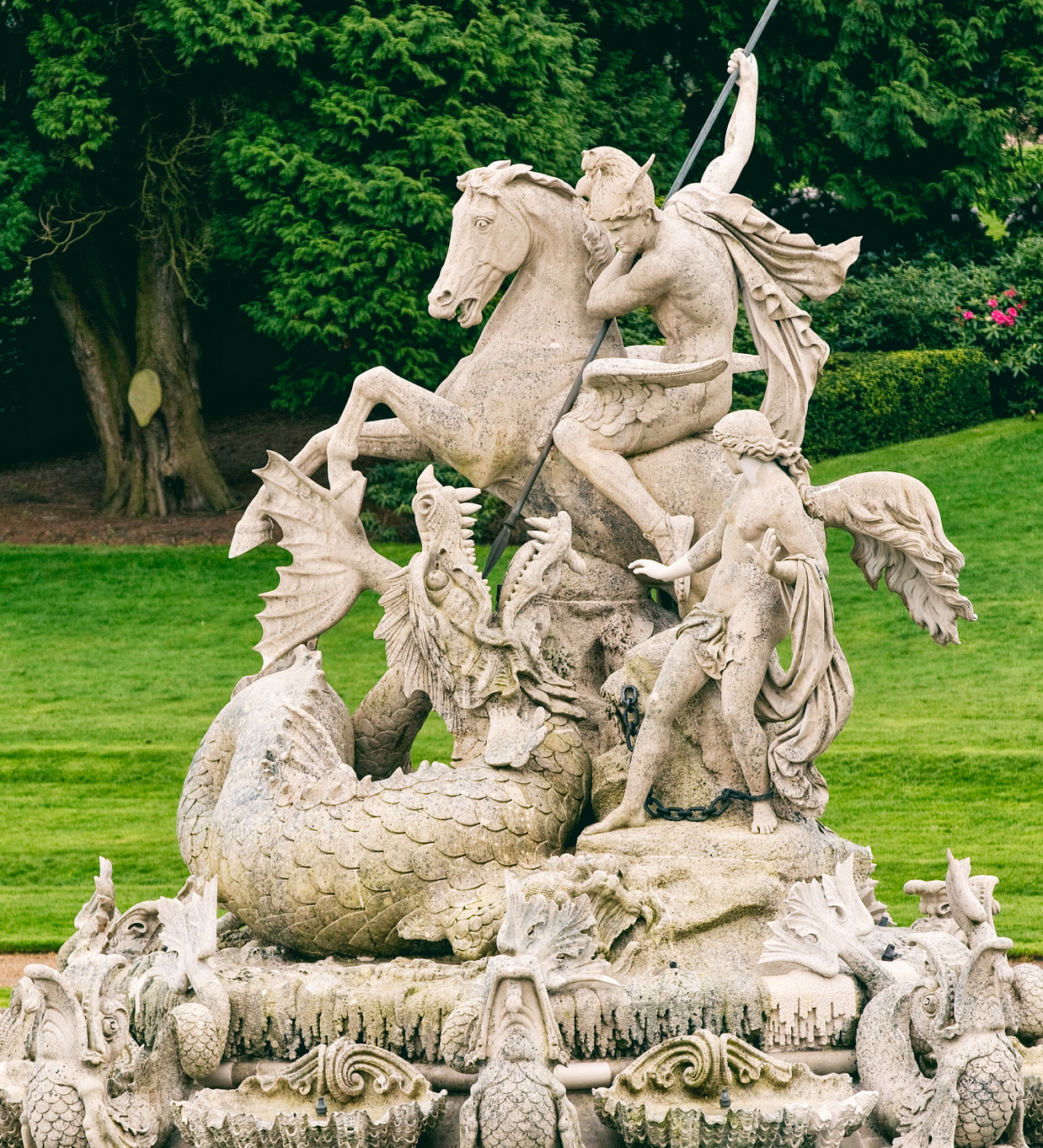WHY WE LOVE WITLEY COURT AND GARDENS
"Absolutely beautiful place - so much room for the children to run about and lovely play areas too. We love exploring the ruins and it was great to see the fountain working!" Nikki (visitor)
"My favourite part of the garden is the east parterre because it's so bright and colourful." Jasmine, Head Gardener who has worked at Witley for 3 years. (Pictured with her dog, Monty)
"What an absolutely amazing grounds and house. I am still in awe of the fountain and the church. The staff were superb with activities held for the children, but they were entertained enough just by exploring. Just magnificent. Can't wait to go again!" Andrea (visitor)
TAKE A CLOSER LOOK
The Perseus and Andromeda Fountain
It was once described as making the noise of an express train.
Witley's impressive fountain depicts a well-known scene of Greek mythological heroism. When the vain queen Cassiopeia of Ethiopia claimed that her daughter Andromeda was more beautiful than the sea nymphs, Poseidon was angered and unleashed the sea monster Cetus to devour her. The monster slayer Perseus came across Andromeda in distress, and is seen spearing the sea monster from his winged horse to save the beautiful maiden from her fate.
120 jets are hidden among the shells, sea nymphs and dolphins of the fountain, creating a breathtaking display everyday from April to October as streams of water soar high into the air. For perhaps the best view, watch the display from the steps to the south portico.
WHAT MAKES WITLEY SPECIAL?
Witley Court was closely associated with the Foley family for nearly two centuries. The Foleys made their wealth in the iron industry, manufacturing nails, but later abandoned their business and – with their new power – lived as landed aristorats and politicians.
The house later came into the ownership of William Ward. In the 1850s, as 1st Earl of Dudley, Ward commissioned the architect Samuel Daukes to remodel Witley Court. Bath stone was used to transform the property in the ornate Italianate style also used at Osborne for Queen Victoria. With his immense wealth, Dudley held lavish house parties attented by his circle, including the Prince of Wales (later King Edward VII).
Following a devastating fire in 1937, a magnificent stately home became one of England's largest and most spectacular ruins. With areas of plaster and decoration still intact, it is easy today to imagine Witley's immense grandeur and splendor. Surrounding the stark ruin, vibrant parterre gardens provide a remarkable contrast. Maintained to the standard they would have kept in Witley Court's opulent heyday, the gardens frame the house with beautiful colour.
Discover Witley's historyWitley Court: Then and Now
Witley Court today and in 1897, with the gates that once formed the entrance to the South gardens. The historical image was originally published in Country Life Illustrated (London), Saturday 7 August 1897. (CC0 public domain)
THREE THINGS TO LOOK OUT FOR
- Great fountains: The grade I listed Perseus and Andromeda Fountain and lesser-known Flora Fountain were both intricately sculpted by James Forsyth in around 1860.
- Woodland walks: The Wilderness and other woodland areas of the park are home to a broad range of tree and shrub varieties from all over the world. Don't miss the rhododendrons which are spectacular in the spring.
- Open waters: Among the gardens, various pools and lakes provide calm areas to relax and reflect. The linear Front Pool includes a Victorian boathouse.
You might also enjoy
-

Stay at Witley Court
Holiday in the Pool House at Witley Court.
-

Travel guide: West Midlands
Take a short break in the West Midlands
-

Nearby: Stokesay Castle (23 miles from Witley)
The best preserved fortified medieval manor house in England
-

Visit for free as a member
Save money by joining today

